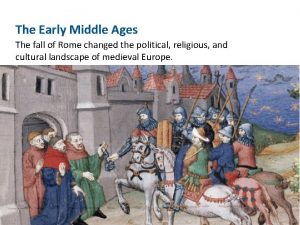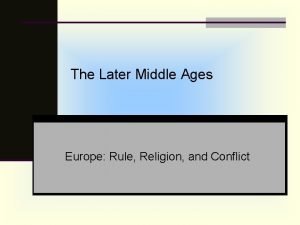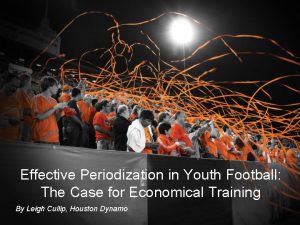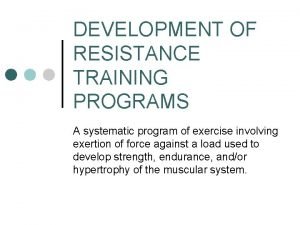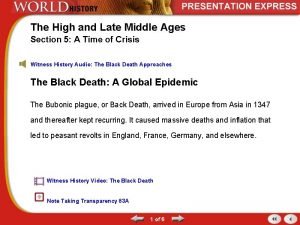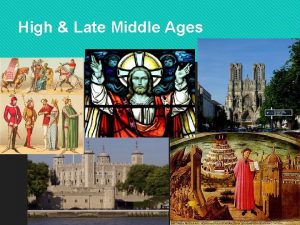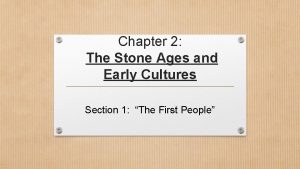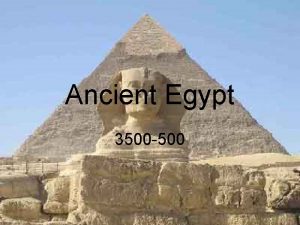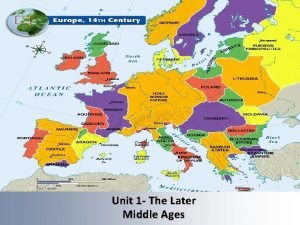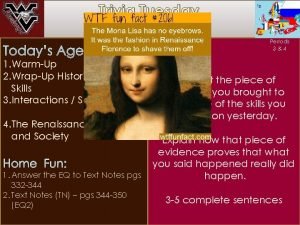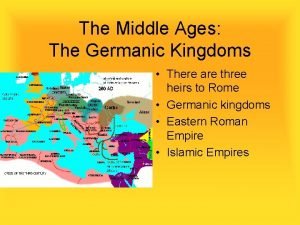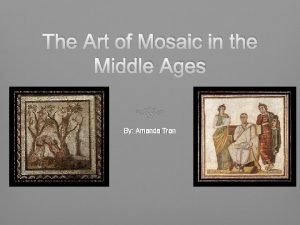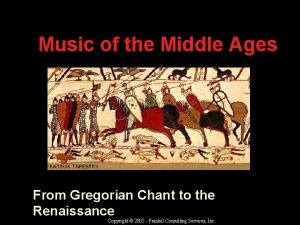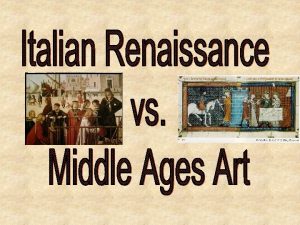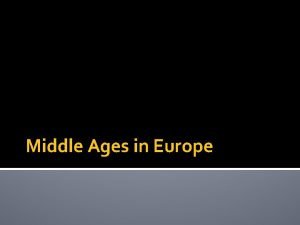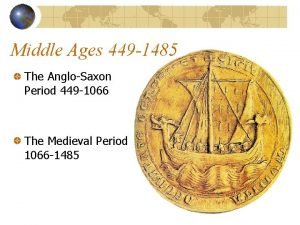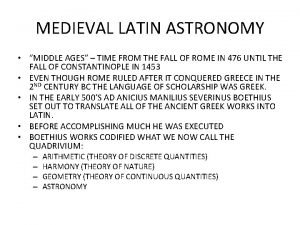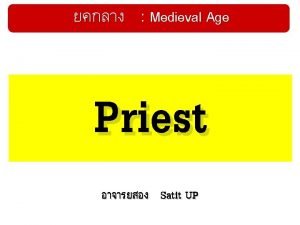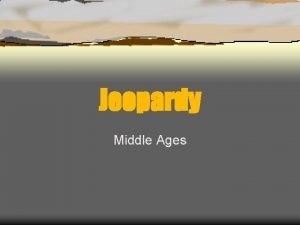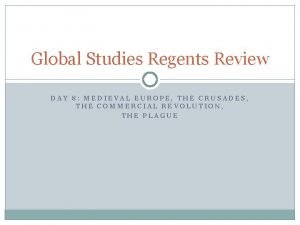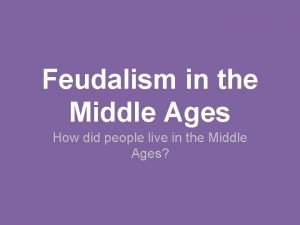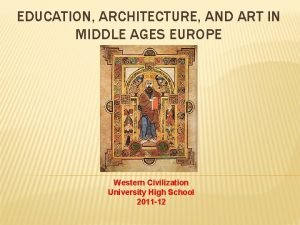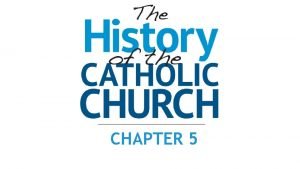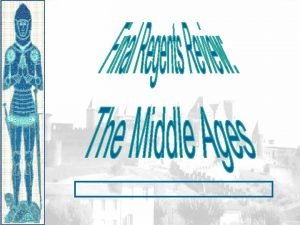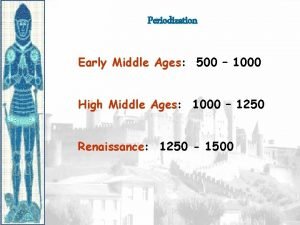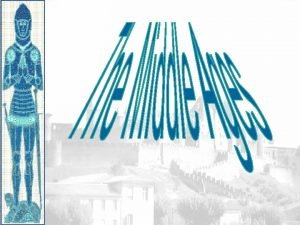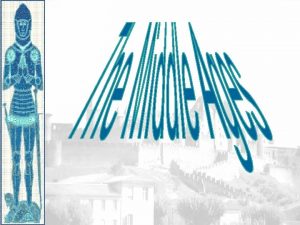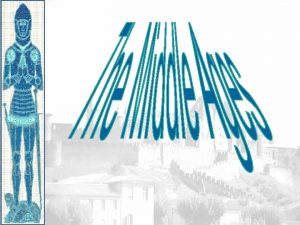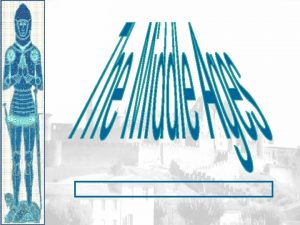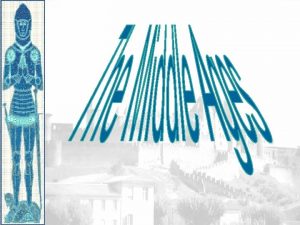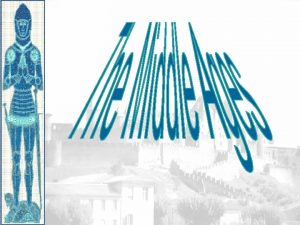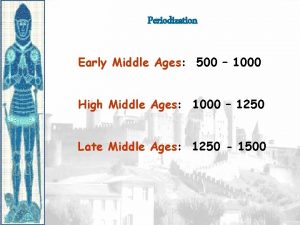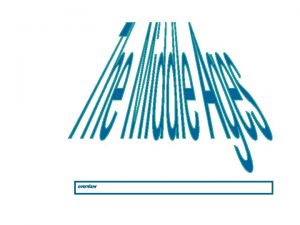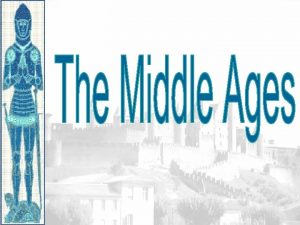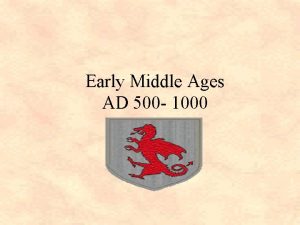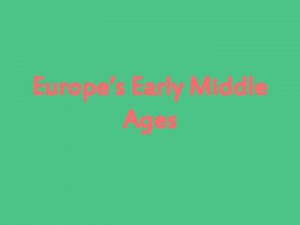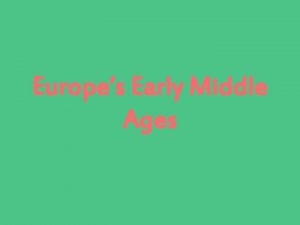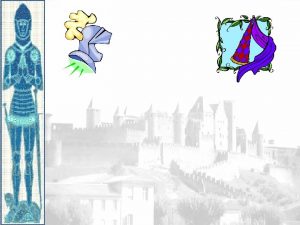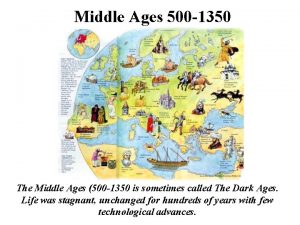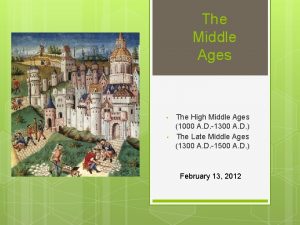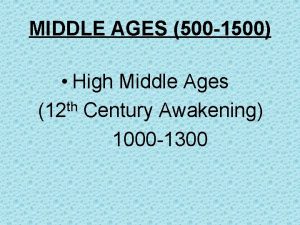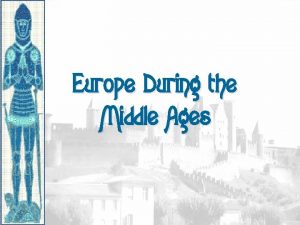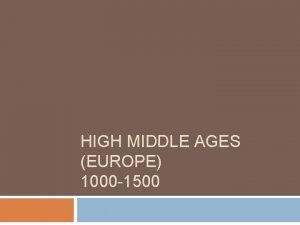Periodization Early Middle Ages 500 1000 High Middle
































- Slides: 32

Periodization Early Middle Ages: 500 – 1000 High Middle Ages: 1000 – 1250 Late Middle Ages: 1250 - 1500

Europe in the 6 c

Charlemagne: 742 to 814

Charlemagne’s Empire

Pope Crowned Charlemagne Holy Roman Emperor: Dec. 25, 800

The Carolingian Renaissance

Carolingian Miniscule

Charlemagne’s Empire Collapses: Treaty of Verdun, 843

Feudalism A political, economic, and social system based on loyalty and military service.

Pope Urban II: Preaching a Crusade

Setting Out on Crusade

Christian Crusades: East and West

Holy Roman Empire


Holy Roman Empire • Not necessarily Holy, but deferred to and “protected” the Pope • Not necessarily Roman, but German • Not necessarily an Empire, but a collection of German “Principalities” (from “Prince”) • Christianity the unifying force all over Europe • “Excommunication” and “Interdict” kept kings and princes in line

Holy Roman Empire • Otto the Great – Used clergy to offset power of nobles. Built up monasteries and allied with abbots. – Crowned King in 936, crowned emperor in 962 after invasion of Italy • Henry IV – Lay investiture problems – banned by Pope in 1075 – Concordat of Worms – veto power of Pope

Frederick I “Barbarossa” • First to call lands “Holy Roman Empire” after elected by German princes • Invaded Italy’s rich cities; merchants and Pope vs Barbarossa • 1176 – crossbow-wielding Lombard League soldiers at Legnano defeated Feudal Knights – 1 st time! • Weakening of “king” in Germany, but strengthening of lands in France and England…

The Rise of European Monarchies: England

William the Conqueror: Battle of Hastings, 1066 (Bayeaux Tapestry)

Evolution of England’s Political System v Henry I: § William’s son. § set up a court system. § Exchequer dept. of royal finances. v Henry II: § established the principle of common law throughout the kingdom. § grand jury. § trial by jury.

Magna Carta, 1215 v King John I v Runnymeade v “Great Charter” v monarchs were not above the law. v kings had to consult a council of advisors. v kings could not tax arbitrarily.

The Beginnings of the British Parliament v Great Council: § middle class merchants, townspeople [burgesses in Eng. , bourgeoisie in Fr. , burghers in Ger. ] were added at the end of the 13 c. § eventually called Parliament. § by 1400, two chambers evolved: o House of Lords nobles & clergy. o House of Commons knights and burgesses.

The Rise of European Monarchies: France

Feudalism meets Monarchy • English Kings (Plantagenets) own lands in France (Aquitaine, for example). • Are Kings of England vassals to the French Crown (Capetians)? • Tough questions, when England France are gaining identities as “Frenchmen” and “Englishmen” rather than “Franks” or “Angles” or “Saxons” or “Burgundians. ”




Gothic Architectural Style e Pointed arches. e High, narrow vaults. e Thinner walls. e Flying buttresses. e Elaborate, ornate, airier interiors. e Stained-glass windows. “Flying” Buttresses

Commerce and Nationalism • Rise of a commercial class leads to a strengthening of trade and commerce. • Goods and ideas exchanged, time of “revolution” away from feudalism and to nation-states with powerful commercial interests • Along with destruction of Feudal chivalry on the Crusades, new trade means that change is on the wing! • Europeans ready to join the world.

Medieval Universities

Medieval Trade

Medieval Guilds Guild Hall v Commercial Monopoly: § Controlled membership apprentice journeyman master craftsman § Controlled quality of the product [masterpiece]. § Controlled prices
 Dark ages def
Dark ages def Renaissance art vs medieval art
Renaissance art vs medieval art Early middle ages
Early middle ages Early middle ages
Early middle ages Tactical periodization youth soccer
Tactical periodization youth soccer Periodization training
Periodization training Matveyev's model of periodization
Matveyev's model of periodization The high and late middle ages section 5 quiz
The high and late middle ages section 5 quiz High to late middle ages
High to late middle ages High middle ages
High middle ages Chapter 7 early childhood ages 3 through 5 answer key
Chapter 7 early childhood ages 3 through 5 answer key The stone ages and early cultures
The stone ages and early cultures 100 200 300 400 500
100 200 300 400 500 3500 500
3500 500 Map of europe in middle ages
Map of europe in middle ages Renaissance vs middle ages
Renaissance vs middle ages Germanic kingdom
Germanic kingdom History of floral design greek period
History of floral design greek period Mosaic middle ages
Mosaic middle ages Late middle ages timeline
Late middle ages timeline Gregorian chant middle ages
Gregorian chant middle ages Renaissance vs middle ages
Renaissance vs middle ages Manor system def
Manor system def Middle ages description
Middle ages description Astronomy in the middle ages
Astronomy in the middle ages Church hierarchy pyramid
Church hierarchy pyramid Middle ages jeopardy
Middle ages jeopardy Middle ages regents questions
Middle ages regents questions Feudal system in the middle ages
Feudal system in the middle ages Cathedral art
Cathedral art What word means rebirth
What word means rebirth Similarities between middle ages and renaissance
Similarities between middle ages and renaissance Middle ages def
Middle ages def


